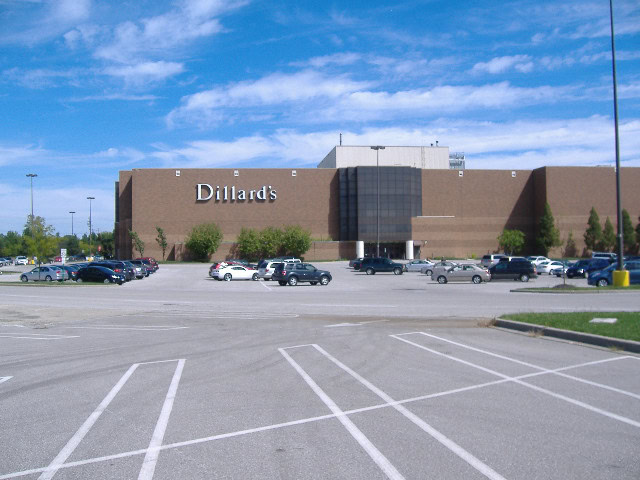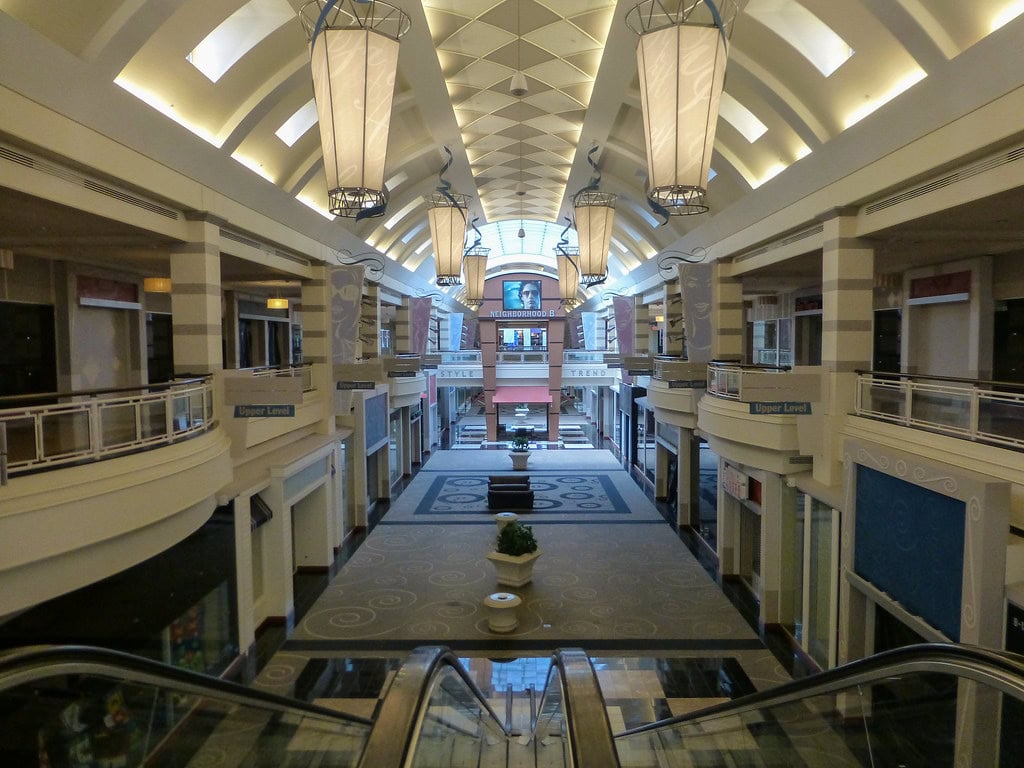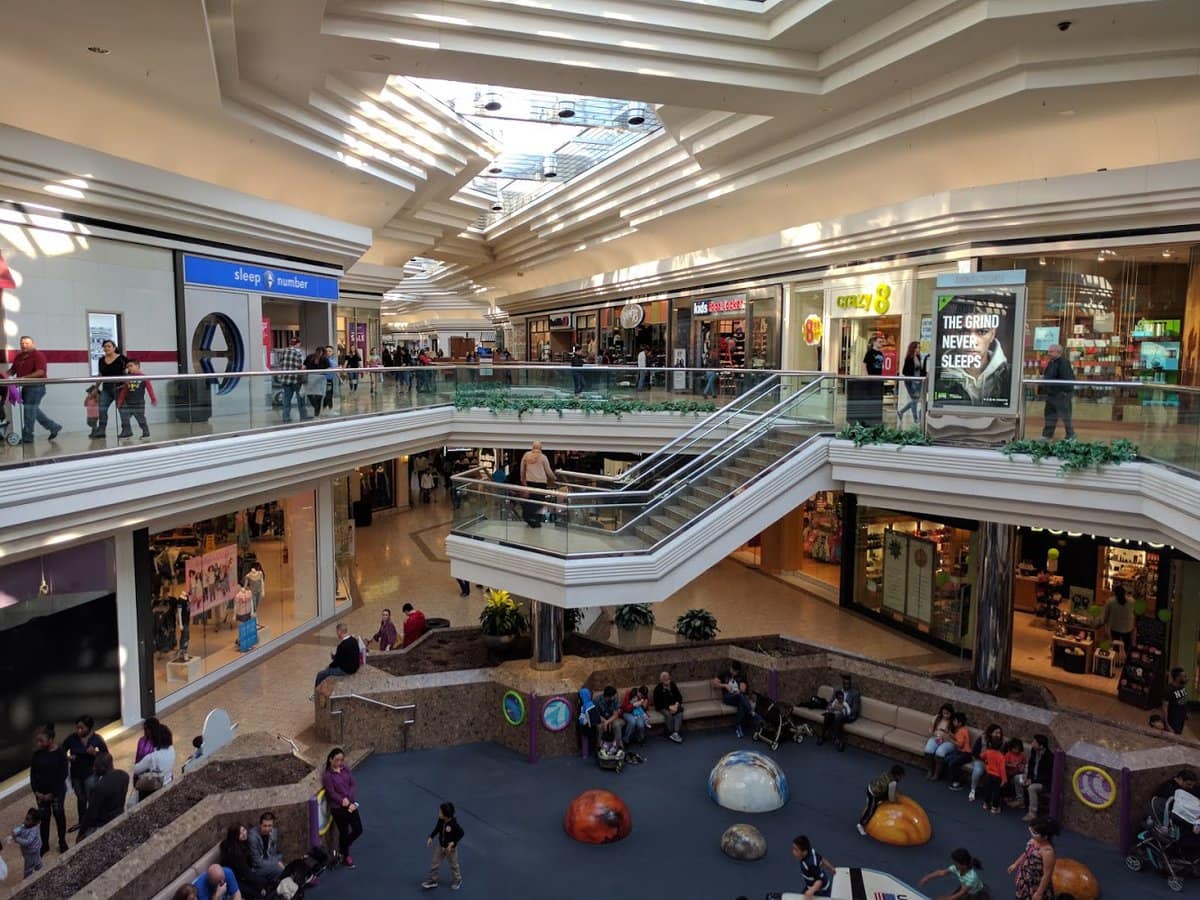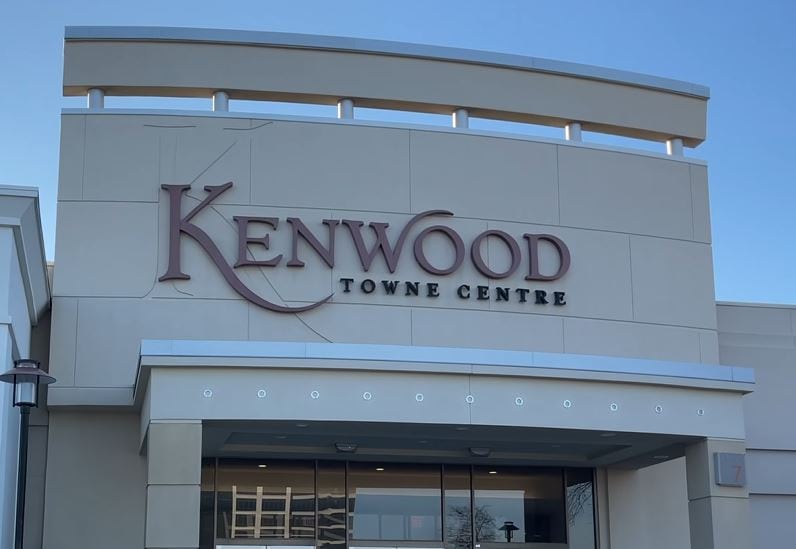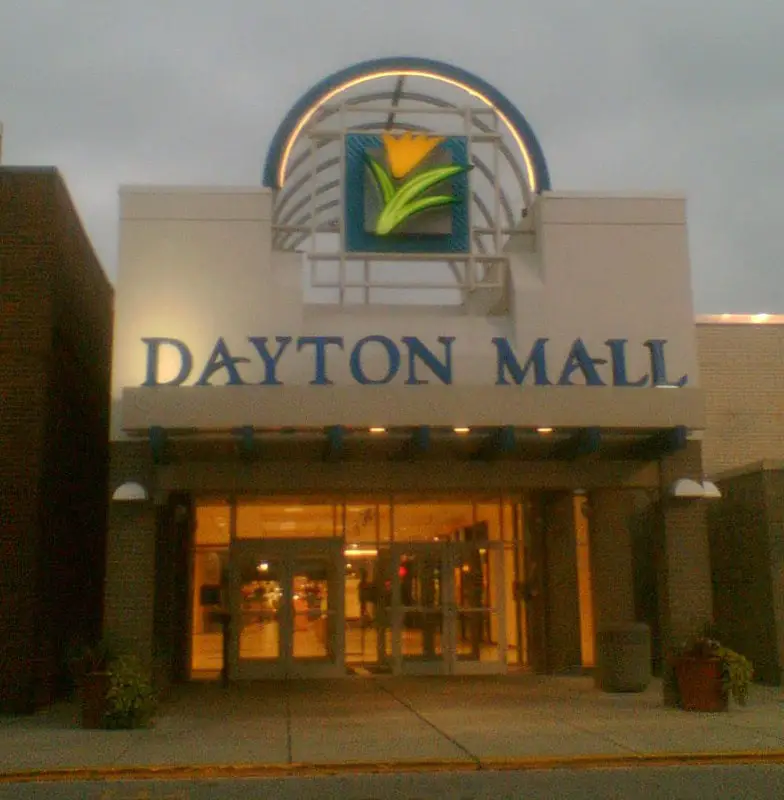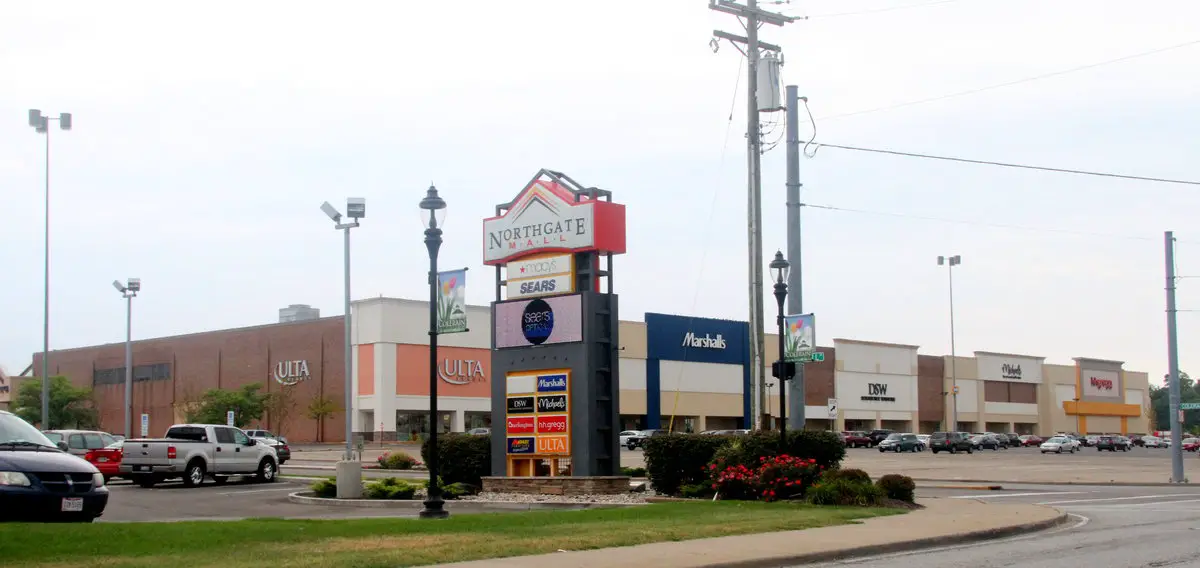Eastgate Mall and a Field Turned Future
In the mid-1970s, when Clermont County had more cornfields than parking lots, a Cleveland developer arrived, certain this was meant to be.
Jacobs Visconsi & Jacobs began construction in 1974 on the Aicholtz farmland, aiming to open Eastgate Mall by 1977. In 1975, the recession halted work.
Over the next years, negotiations with the main stores stalled, and legal issues delayed the opening. By 1979, prospects improved, and not until March 1980 did the mall open its glass doors to 250,000 visitors.
JCPenney and Sears took the main corners, with 90 other stores lined up in between, set up by a developer who believed shopping was more than just something to do, but something people should do.
The mall called itself the new shopping center for Cincinnati's eastern suburbs, and people showed up as if they had been waiting for it.
Within months of the March 1980 mall opening, Showcase Cinemas opened next door, showing Flash Gordon with Ornella Muti.
When the cinema officially opened in December 1980, the Eastgate complex felt less like a test in the suburbs and more like a gathering place built on farmland.
The mall had arrived, bringing the sounds of air conditioning, neon lights, and dreams of suburban life.
Expansion Years and the Thrill of the Nineties
In the late 1980s, the food court opened. It was small but in just the right spot to attract teenagers and shoppers who wanted to take a break.
By the early 1990s, Eastgate Mall had eased away from its doubtful start and settled into operating as a busy mall.
Foot traffic surged, more businesses launched, and developers came forward requesting expanded space. In 1992, McAlpin's opened its location as the mall's third main store there.
This local favorite added a new hallway and about 30 more shops. With around 100 stores, Eastgate Mall finally felt like a true city mall in a county that was still getting used to the idea.
The next large update surfaced in August 1995, when Kohl's took over as the fourth main store, completing the mall's earlier planned scheme.
The mall earned a kind of minor fame for its trio of music stores: Camelot, Tape World, and Musicland. Arguments about new releases floated through corridors thick with cologne.
By 1998, the anchors were shifting. McAlpin's shed its name after Dillard's bought the parent company and planted its own sign over the doors.
It was another quiet swap in a decade full of them. Local brands slipped out. National ones moved in.
Most shoppers accepted the change with the practiced shrug of people who spent their weekends indoors. Still, the place held onto the unhurried mood of the 1990s.
This feeling was helped along by a community that continued to believe the age of the enclosed mall had room yet to rise.
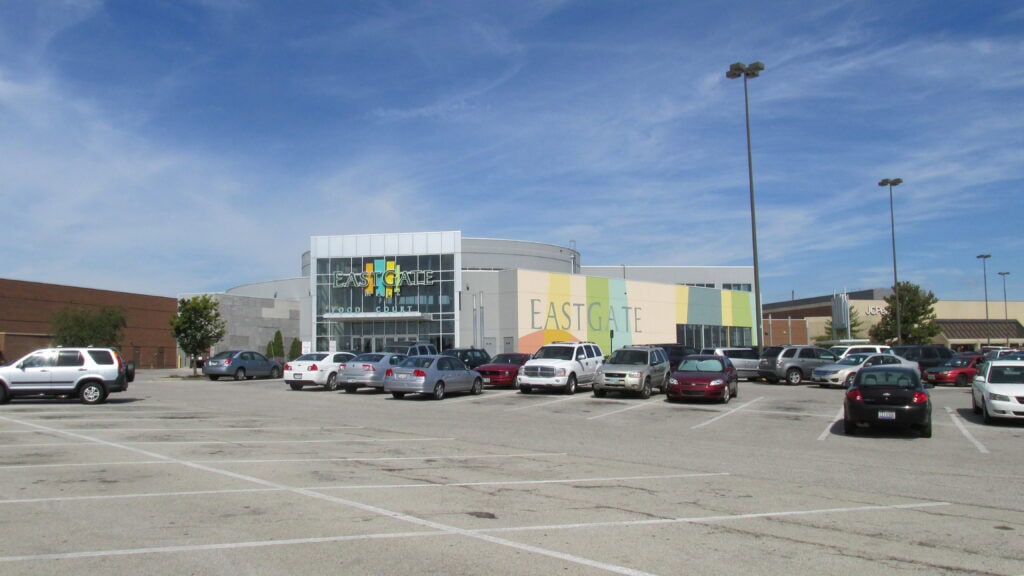
A Cinematic Moment and the Turning Century
Eastgate Mall's most famous moment arrived not through commerce but through Hollywood.
In 1988, Tom Cruise and Dustin Hoffman appeared at the mall during the release of Rain Man, briefly converting a suburban concourse into a celebrity runway.
For locals, it became the sort of memory recounted decades later with the instinctive pride of a small place brushed by larger moods.
The 2000s started with new owners when CBL & Associates bought the mall with 23 other properties in a huge 1.3 billion dollar deal.
For Eastgate Mall, this meant being run by a big national company that was always positive.
In 2003, a $18 million renovation swapped out the old brown brick and terrazzo for brighter Spring Meadow colors. The lighting got better, the floors shone, and a new food court was added.
These changes made the mall look better, but mostly just delayed bigger problems.
At the same time, the area around the mall filled up with large chain stores and better roads.
The mall stayed a steady main spot in a busy area that experts said had too many stores but was still important for business.
Still, small changes started to happen.
National brands started to change their plans for opening new stores, online shopping started to become a real threat, and when the Showcase Cinemas closed in 2005, it showed that even trusted nearby businesses could close.
Dimming Anchors and the Slow Creep of Decline
The 2010s marked the first years when Eastgate Mall began to show its age in ways that were hard to ignore.
In March 2015, Dillard's slipped into clearance status, closing its mall entrance and collapsing its footprint to one floor.
It didn't leave, not exactly, but the move had the quiet finality of someone packing a suitcase before they admit they're moving out.
There were small flashes of hope. H&M arrived that same year, bringing a rush of younger shoppers who still treated a mall as a place worth lingering in.
But the broader weather pattern had already shifted. National chains were trimming their store counts, and enclosed malls across the country felt the chill. Eastgate Mall wasn't exempt.
Then came 2019, when Sears announced what everyone had half expected but still dreaded. By December, its doors closed for good.
Nearly forty years of co-anchor history ended in a final sweep of fluorescent lights powering down, leaving a boxy, echoing void at the edge of the property.
The question that followed wasn't dramatic but persistent: what fills a space that big when the retail world keeps shrinking?
Still, the mall kept going. JCPenney held on. Kohl's stayed put.
Entertainment tenants like Glowgolf and Dart Ops popped up to replace disappearing apparel stores, throwing off enough neon to distract from the empty stretches around them.
But everyone knew the rule: once an anchor goes dark, the rest of the mall feels it in its bones.
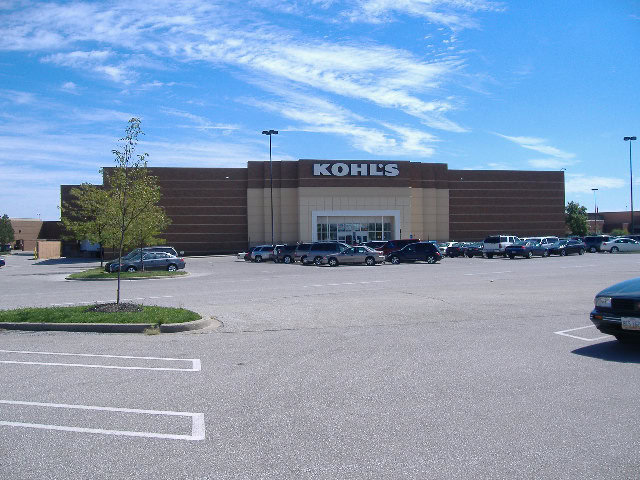
A Legal Quagmire and the Battle for the Sears Box
The most important part of Eastgate's recent story started not with a new store but with a surprise buyer.
In July 2021, Kroger bought the empty Sears building for $5.5 million, hinting at plans for a Kroger Marketplace big enough to change where people shop in the area.
Two years later, things got more complicated. In September 2023, Hull Property Group bought the mall for about 11.6 million dollars, saying it needed repairs.
Hull wanted to make changes, but also wanted to stay in control.
When Kroger got ready to tear down the Sears building and build a road facing Marketplace, Hull disagreed.
On December 11, 2023, the developer took Kroger to court, saying the way Kroger wanted to set up the store would hurt the mall's chances of doing well for years to come.
The legal fight stopped everything from moving forward, and throughout the rest of 2024, the case dragged on without a solution.
By early 2025, there was still no end in sight, leaving the old Sears building stuck in an unfinished state.
As these legal battles continued, the situation got more complicated. In June 2025, a judge ordered that demolition had to stop for now.
With several owners in charge of the larger 100-acre area and at least five groups able to block decisions until 2030, Eastgate Mall's future now depends less on what shoppers want and more on lawyers, deals, and court dates.
Vacancies, Vision Plans, and the Unraveling Middle
Meanwhile, the inside of the mall started to look like a museum of what it used to be. By 2024, stores started closing one after another.
GNC, Discovery Zone, Glow Golf, Claw Crazy Arcade, Blackout Tees, Denno's International Gifts, and Eutopia all left.
Big Lots said it would close in late 2024 and filed for bankruptcy to try to reorganize its business.
By September 2025, 59 percent of the mall's stores were empty. Some tenants quietly said that shoppers thought the mall was already closed.
Local officials tried to fight the bad mood with new ideas. In 2024, Union Township shared the Envision Eastgate plan, a 25-page document about a future with restaurants, homes, offices, trails, and places for fun.
The community shared their ideas with excitement. But the plan needed all property owners to work together.
Every empty store makes people think even more that Eastgate Mall is getting closer to the point where only tearing it down would make things clear.
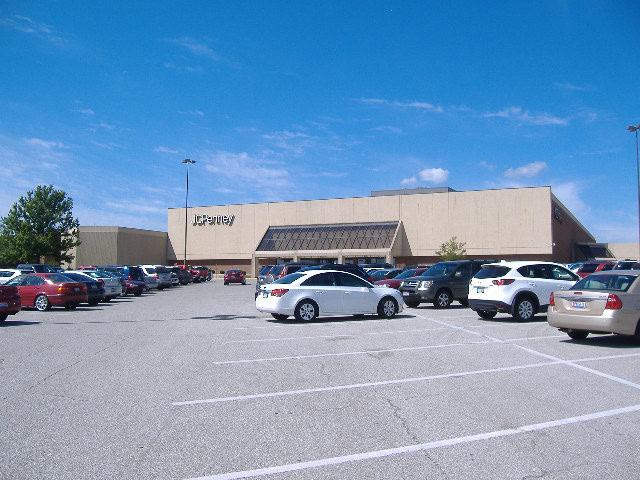
What Remains and What Might Rise
Today, Eastgate Mall stands as a case study in the resilience and fragility of American retail.
It occupies 100 acres with 1,066,000 square feet of leasable space and over 4,800 parking spots that once overflowed during holidays.
JCPenney and Kohl's endure as the traditional anchors. At the same time, Dillard's Clearance holds the third corner like a lighthouse still technically lit. The fourth, once Sears, waits for a judge to decide its fate.
A few tenants still draw modest crowds. But the concourse often feels suspended in time, occupied by more echoes than footsteps.
And yet, the land remains too strategic to languish indefinitely. The interchange of I-275 and State Route 32 still funnels thousands of potential customers past Eastgate Mall's perimeter every day.
Developers know the site is valuable even if the mall is no longer. Somewhere between the litigation, the master plans, and the patchwork of landowners lies the outline of a future district.
When it comes, it will inherit the long story of a mall that once drew a quarter million visitors in its first weekend, hosted Hollywood royalty, and anchored an entire county's suburban expansion.
Eastgate Mall may be hollowed out, but it is not forgotten. It is waiting, as malls often do, for someone willing to imagine what comes next.
